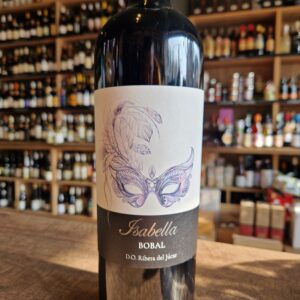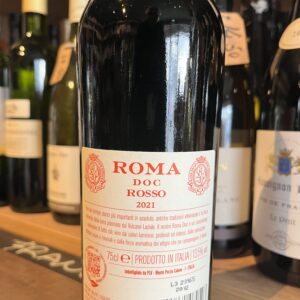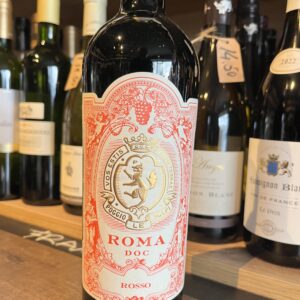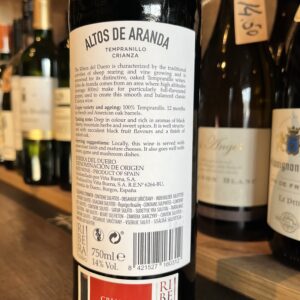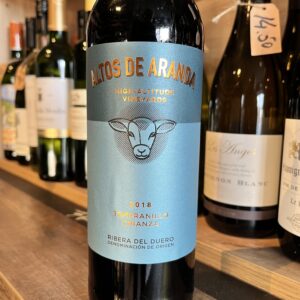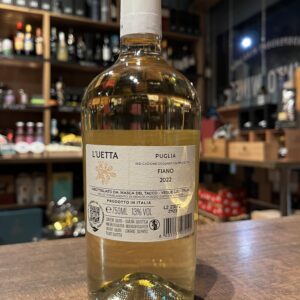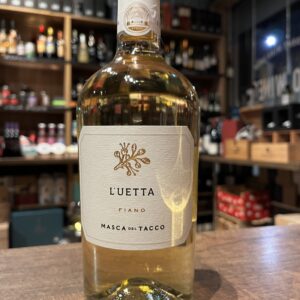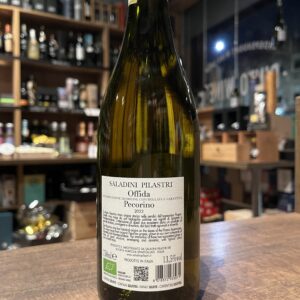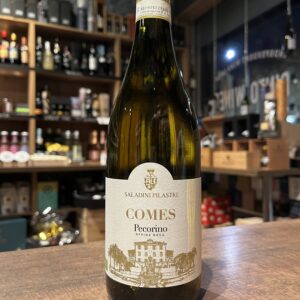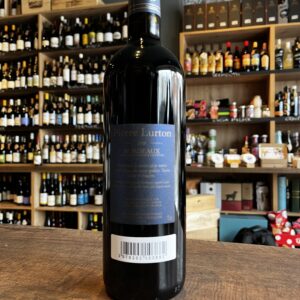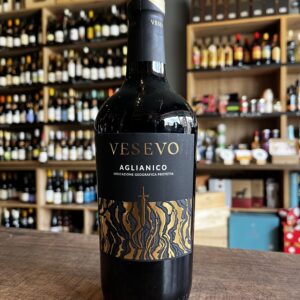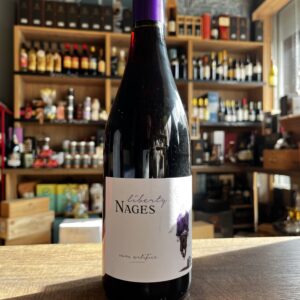-
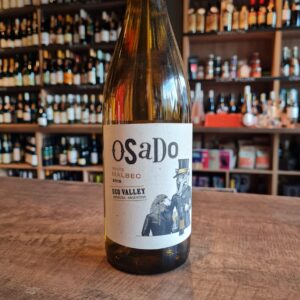 Being Osado or daring, is not being fearless, or not having second thoughts. Being Osado means living without prejudice, being free of any obligations and building your own way of life. Malbec brings a strong posture to this white wine and its aftertaste is long, fresh and clean. The grapes are harvested by hand in the cool of the morning, pressed under very low pressure so that no color has come off the grapes. The wine has been cold-consumed for 15 days and then matured in steel tanks on top of the precipitate for five months. This delicious wine is a very versatile food wine accompanied by grilled fish or asparagus, for example, and is also suitable as an aperitif as such. Grapes: Malbec 100%.
Being Osado or daring, is not being fearless, or not having second thoughts. Being Osado means living without prejudice, being free of any obligations and building your own way of life. Malbec brings a strong posture to this white wine and its aftertaste is long, fresh and clean. The grapes are harvested by hand in the cool of the morning, pressed under very low pressure so that no color has come off the grapes. The wine has been cold-consumed for 15 days and then matured in steel tanks on top of the precipitate for five months. This delicious wine is a very versatile food wine accompanied by grilled fish or asparagus, for example, and is also suitable as an aperitif as such. Grapes: Malbec 100%. -
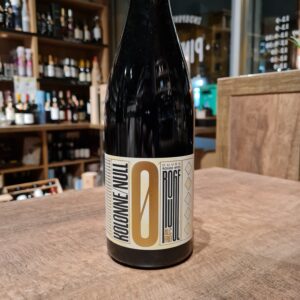 In the middle of the Spanish plateau "Meseta de Ocana" not far from Toledo, three friends founded their own winery in 1999: Margarita Madrigal, Alexandra Schmedes and Gonzalo Rodriguez. The revival of regional traditions became the basis of their way of working, which is characterized by the ecological cultivation of 35 hectares of native grape varieties and the extremely continental climate. Together with Alexandra, the first Spanish red wine, Cuvée Rouge No.2, was developed. This velvety, grippy taste makes it a must-drink on a barbecue evening, with risotto and pasta. The perfect non-alcoholic red wine for all those who love it wild and unbridled. Bring your Spain vacation home!
In the middle of the Spanish plateau "Meseta de Ocana" not far from Toledo, three friends founded their own winery in 1999: Margarita Madrigal, Alexandra Schmedes and Gonzalo Rodriguez. The revival of regional traditions became the basis of their way of working, which is characterized by the ecological cultivation of 35 hectares of native grape varieties and the extremely continental climate. Together with Alexandra, the first Spanish red wine, Cuvée Rouge No.2, was developed. This velvety, grippy taste makes it a must-drink on a barbecue evening, with risotto and pasta. The perfect non-alcoholic red wine for all those who love it wild and unbridled. Bring your Spain vacation home! -
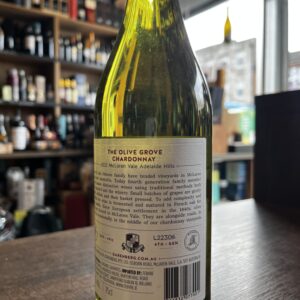
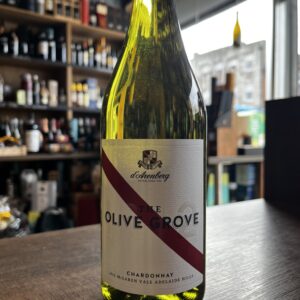 Since 1912 the Osborn family have tended vineyardsin Mclaren Vale, South of Australia. Today fourth generation family member Chester(absolutely bonkers of a guy, draws a room in and within 2 minutes has your attention), makes distintive wines using traditional methods both in the vineyards and the winery. The name comes from European settlements that arised in the 1840’s, and with them olive trees have thrived in McLaren Vale. They are alongside roads, in gardens and occasionally, block their harvesters from doing a fully mechanical job! Perfect with Antipasti, asparagus, chicken and fish
Since 1912 the Osborn family have tended vineyardsin Mclaren Vale, South of Australia. Today fourth generation family member Chester(absolutely bonkers of a guy, draws a room in and within 2 minutes has your attention), makes distintive wines using traditional methods both in the vineyards and the winery. The name comes from European settlements that arised in the 1840’s, and with them olive trees have thrived in McLaren Vale. They are alongside roads, in gardens and occasionally, block their harvesters from doing a fully mechanical job! Perfect with Antipasti, asparagus, chicken and fish -
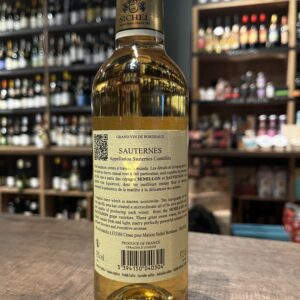
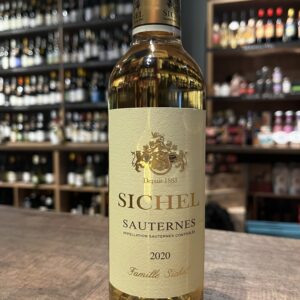 This is a declassified wine from a top Chateau in Sauternes...shhh, they dont want you to know their name! or...just keep reading Maison Sichel is a Bordeaux based, family owned and run negociant of six generations. The Sichel family have been a sugnificant prescence in Bordeaux since 1883 and have continued to expand operations by purchasing several properties in Bordeaux including Chateau Angludet and Chateau Argaden. The Sichel family also joined with three other family in 1938 to purchase the now legendary Chateau Palmer. Maison Sichel continued to expand their operations outside of Bordeaux with Chateau Trillol in Corbieres and have several high quality own label wines such as the Sichel Sauternes and the Sichel Margaux. The Sichekl Vineyards are situated some 40 kilometers south east of Bordeaux, between the Garonne river and the Landes forest to the south. A blend of 80% Semillon, 15% Sauvignon Blanc and 5% Muscadelle from 50 year old vines where Botrytis is encouraged to dehydrate the grapes. This Sauterne has been aged for 10 to 12 months.
This is a declassified wine from a top Chateau in Sauternes...shhh, they dont want you to know their name! or...just keep reading Maison Sichel is a Bordeaux based, family owned and run negociant of six generations. The Sichel family have been a sugnificant prescence in Bordeaux since 1883 and have continued to expand operations by purchasing several properties in Bordeaux including Chateau Angludet and Chateau Argaden. The Sichel family also joined with three other family in 1938 to purchase the now legendary Chateau Palmer. Maison Sichel continued to expand their operations outside of Bordeaux with Chateau Trillol in Corbieres and have several high quality own label wines such as the Sichel Sauternes and the Sichel Margaux. The Sichekl Vineyards are situated some 40 kilometers south east of Bordeaux, between the Garonne river and the Landes forest to the south. A blend of 80% Semillon, 15% Sauvignon Blanc and 5% Muscadelle from 50 year old vines where Botrytis is encouraged to dehydrate the grapes. This Sauterne has been aged for 10 to 12 months. -

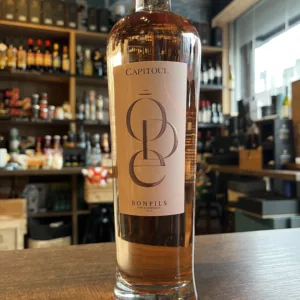 A precious Mediterranean vineyard composed of pebbles and rolled pebbles, Château Capitoul appears like a rough diamond placed on the La Clape massif. With 62 hectares of vines located at the extreme tip of the La Clape massif, its terroir. is the most maritime of the appellation Its vineyard dates back to the 14th century, when it was exploited by the cathedral of Narbonne, which gave its name to the château. In 2015 the La Clape appellation was recognized as “Grand Vin du Languedoc” , thus joining other prestigious French appellations with international renown. Capitoul - Ode can be enjoyed as an aperitif, or accompanied by tapas, a bouquet of shrimp, grilled sea bream, a vegetarian tagine or even a strawberry panna cotta.
A precious Mediterranean vineyard composed of pebbles and rolled pebbles, Château Capitoul appears like a rough diamond placed on the La Clape massif. With 62 hectares of vines located at the extreme tip of the La Clape massif, its terroir. is the most maritime of the appellation Its vineyard dates back to the 14th century, when it was exploited by the cathedral of Narbonne, which gave its name to the château. In 2015 the La Clape appellation was recognized as “Grand Vin du Languedoc” , thus joining other prestigious French appellations with international renown. Capitoul - Ode can be enjoyed as an aperitif, or accompanied by tapas, a bouquet of shrimp, grilled sea bream, a vegetarian tagine or even a strawberry panna cotta. -
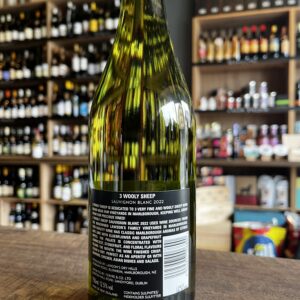
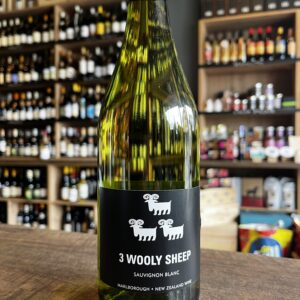 This quality wine has classic Marlborough aromas of citrus and limes with elderflower and grapefruit notes. The palate is concentrated with lemon zest, stonefruit and floral flavours filling the mouth. The wine finishes crisp, clean and dry. Perfect as an aperitif or with seafood, chicken, Asian dishes and salads.
This quality wine has classic Marlborough aromas of citrus and limes with elderflower and grapefruit notes. The palate is concentrated with lemon zest, stonefruit and floral flavours filling the mouth. The wine finishes crisp, clean and dry. Perfect as an aperitif or with seafood, chicken, Asian dishes and salads. -
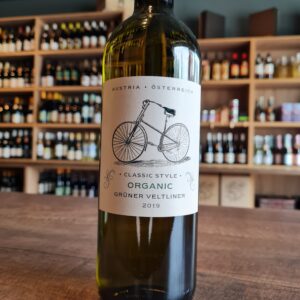 All Sepp Moser wines have been organic (and all estate wines biodynamic) since 2007. The Sepp Moser Estate comprises of 50 acres of vineyards in two prominent wine regions; Kremstal and Neusiedlersee. Now run by Sepp's son Nikolaus, he produces an international range of varieties as well as the ever more important local varieties of Gruner Veltliner and Riesling in the Kremstal. Delicate aromas of pear, kiwi, apricot and white spice. On the palate stone fruit flavours and white pepper lead to a gently textured, mineral and citrus finish. Great with fish, Chicken or light dishes in general. Lovely on its own on hot summer day
All Sepp Moser wines have been organic (and all estate wines biodynamic) since 2007. The Sepp Moser Estate comprises of 50 acres of vineyards in two prominent wine regions; Kremstal and Neusiedlersee. Now run by Sepp's son Nikolaus, he produces an international range of varieties as well as the ever more important local varieties of Gruner Veltliner and Riesling in the Kremstal. Delicate aromas of pear, kiwi, apricot and white spice. On the palate stone fruit flavours and white pepper lead to a gently textured, mineral and citrus finish. Great with fish, Chicken or light dishes in general. Lovely on its own on hot summer day -
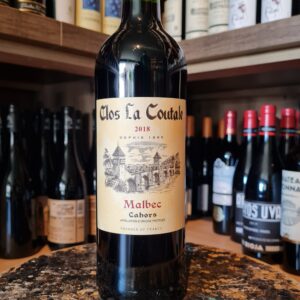 Malbec is the main grape in the legendary ‘Black wine of Cahors’. Way before Argentina made the varietal ‘famous’, Malbec – though in this region it is known as Côt or Auxerrois. – was making long-lived wines from Cahors – the 1959 Clos La Coutale is still drinking superbly. Clos La Coutale is a benchmark of the Cahors region and has a history of producing some of the finest and longest-lived wines of the region. Blackcurrants, blackberry's and prune notes followed by a soft and elegant palate that has an enticing note of vanilla. This Clos La Coutale wine is matured in barrels and wooden casks for one year in order to obtain a good balance between tannins and fruit. Organic and true gem at this price point.
Malbec is the main grape in the legendary ‘Black wine of Cahors’. Way before Argentina made the varietal ‘famous’, Malbec – though in this region it is known as Côt or Auxerrois. – was making long-lived wines from Cahors – the 1959 Clos La Coutale is still drinking superbly. Clos La Coutale is a benchmark of the Cahors region and has a history of producing some of the finest and longest-lived wines of the region. Blackcurrants, blackberry's and prune notes followed by a soft and elegant palate that has an enticing note of vanilla. This Clos La Coutale wine is matured in barrels and wooden casks for one year in order to obtain a good balance between tannins and fruit. Organic and true gem at this price point. -
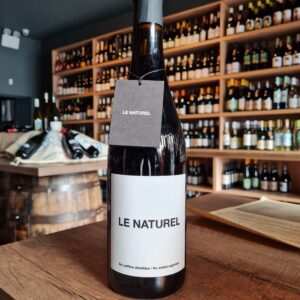 Le Naturel lives up to its name, it is a wine in which the Garnacha is expressed with great openness. On the nose aromas of blackberries and violets appear, while in the mouth it has a good attack of fresh fruit, typical of high altitude vineyards.It is a natural wine, without added sulfites, which also has the certificate of organic and vegan wine. With the aim of minimal intervention (in the field and in the winery) we found in Bodegas Aroa - Le Naturel a specimen of pure and enjoyable Grenache. Specially designed for consumption soon it is open and not for storage. Bodegas Aroa (Vintae group) is located in Zurucuáin, in the heart of the Yerri Valley , sheltered by the Urbasa and Andía Sierras. This winery is one of the pioneers in Navarra in its commitment to the recovery of organic farming practices .
Le Naturel lives up to its name, it is a wine in which the Garnacha is expressed with great openness. On the nose aromas of blackberries and violets appear, while in the mouth it has a good attack of fresh fruit, typical of high altitude vineyards.It is a natural wine, without added sulfites, which also has the certificate of organic and vegan wine. With the aim of minimal intervention (in the field and in the winery) we found in Bodegas Aroa - Le Naturel a specimen of pure and enjoyable Grenache. Specially designed for consumption soon it is open and not for storage. Bodegas Aroa (Vintae group) is located in Zurucuáin, in the heart of the Yerri Valley , sheltered by the Urbasa and Andía Sierras. This winery is one of the pioneers in Navarra in its commitment to the recovery of organic farming practices . -
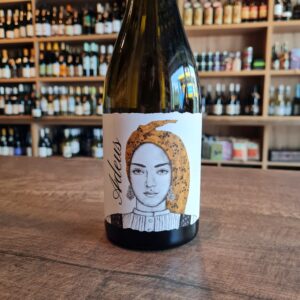 Adeus is the same in Galician as it is Portuguese and means ''Goodbye''. It is also the title of a Galician poem done by one of the most famous poets of Galicia, Rosalia de Castro. One worth that stays in between the love for her land and a homage to a woman that means so much for the history of Galicia. The Ribeiro is 45 km inland from the Atlantic Ocean and is situated in the middle of Valleys that protects it from the Atlantic winds. With 3 Rivers crossing has excellent conditions to produce wine. An excellent pair to grilled octopus with white asparagus garnish, monkfish fillet with stewed spinach and shrimps in garlic sauce
Adeus is the same in Galician as it is Portuguese and means ''Goodbye''. It is also the title of a Galician poem done by one of the most famous poets of Galicia, Rosalia de Castro. One worth that stays in between the love for her land and a homage to a woman that means so much for the history of Galicia. The Ribeiro is 45 km inland from the Atlantic Ocean and is situated in the middle of Valleys that protects it from the Atlantic winds. With 3 Rivers crossing has excellent conditions to produce wine. An excellent pair to grilled octopus with white asparagus garnish, monkfish fillet with stewed spinach and shrimps in garlic sauce -
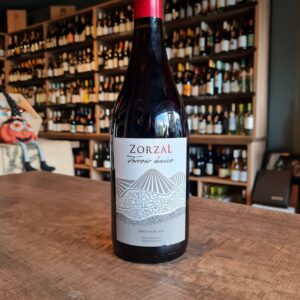
Founded in 2008 to promote the un-explored wine region of Gualtallary. The project is benefitting from investment in the best equipment and team possible. This new project is based on traditional winemaking, with medium scale production. Juan Pablo Michelini is responsible for the core of the concept, which revolves around majority of work being done in the vineyards. This combined with minimal intervention winemaking, best reflects the Gualtallary terroir.
Gualtallary is a remote place in the pre Andes, located in the Tupungato Department in the Northernmost sector of the Uco Valley in Mendoza. It is the highest altitude zone in the region, 1,200 to 1,600m above the sea level.
It has alluvial, primarily sandy soils with calcareous deposit and sectors with a presence of smooth round granitic riverbed stones, covered by calcium carbonate. The vineyard where this variety is grown is situated 1300 metres above sea level. It is a young vineyard, planted on chalky soils, with a very pronounced slope. This helps to keep the ground healthy, because there is no accumulation of water or frosts. The climate is mountainous, so we have a very wide temperature range, resulting in grapes with thicker skins considering it is a Pinot Noir.
The wines have lively, slightly austere profile, reflecting the soils and the altitude of the area. This hand harvested, single vineyard from Gualtallary is 100% Pinot Noir and is completely un-oaked to let the fruit driven quality of the wine shine. Great with and without food
-
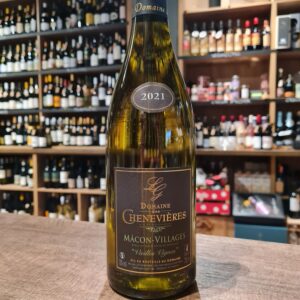 The Domaine des Chenevières has been in operation for 6 generations of winegrowers who love their land. The family farm is now managed by Sylvain, Benoît and Aurélien LENOIR, three cousins who succeeded their parents and took over the torch. The Domaine des Chenevières is located in the town of Saint-Maurice-de-Satonnay (71 Saône-et-Loire, Burgundy), a small village located halfway between Mâcon and Cluny. The vineyard with 46 hectares of vines is located in 3 municipalities: Saint-Maurice-de-Satonnay, Péronne and Azé, also renowned for its prehistoric caves. From pruning to harvesting, from vinification to bottling, everything is done with respect for tradition in order to bring you the enchantment of the aromas that will awaken your taste buds when tasting the white wines or the red wines from the production of the Domaine des Chenevières. The estate's vines are planted on hillsides and mid-hillsides, on clay-limestone soil. They are exposed South / South-East. The vines of the estate are between 20 and 60 years old and sustainable farming is part of every thought process. Thus, part of the vines remains grassed to promote biodiversity with an emphasis on tillage. They have a certification of HVE or High Environmental Value in all of their 46 hectares. Pair it with hors d'ouvres, grilled fish, shellfish, oysters, quiches, gratins. Great value Mâcon-Villages. Enjoy!
The Domaine des Chenevières has been in operation for 6 generations of winegrowers who love their land. The family farm is now managed by Sylvain, Benoît and Aurélien LENOIR, three cousins who succeeded their parents and took over the torch. The Domaine des Chenevières is located in the town of Saint-Maurice-de-Satonnay (71 Saône-et-Loire, Burgundy), a small village located halfway between Mâcon and Cluny. The vineyard with 46 hectares of vines is located in 3 municipalities: Saint-Maurice-de-Satonnay, Péronne and Azé, also renowned for its prehistoric caves. From pruning to harvesting, from vinification to bottling, everything is done with respect for tradition in order to bring you the enchantment of the aromas that will awaken your taste buds when tasting the white wines or the red wines from the production of the Domaine des Chenevières. The estate's vines are planted on hillsides and mid-hillsides, on clay-limestone soil. They are exposed South / South-East. The vines of the estate are between 20 and 60 years old and sustainable farming is part of every thought process. Thus, part of the vines remains grassed to promote biodiversity with an emphasis on tillage. They have a certification of HVE or High Environmental Value in all of their 46 hectares. Pair it with hors d'ouvres, grilled fish, shellfish, oysters, quiches, gratins. Great value Mâcon-Villages. Enjoy! -
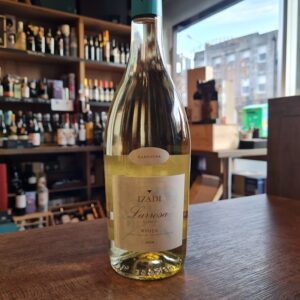 In 1987, Gonzalo Antón, in conjunction with a group of friends and business associates from Vitoria, decided to set up an innovative project in the heart of the Rioja Alavesa. Thus Bodegas Izadi came into being, situated in the triangle formed by the towns of Villabuena, Samaniego and Ábalos, the triangular motif on its labels, and with the clear objective of giving maximum expression to the fruit of that particular location, that natural environment so well-loved (Izadi means 'nature' in Basque), integrating innovation and tradition. This particular vineyard is situated 800m above sea level where the vines are planted in a mix of calcareous and clay soils. Izadi is also one of the few wineries truly involved with gastronomy, aware that even though there's a wine for every moment, on 90% of occasions it's served and enjoyed accompanied by food; and so that's why Izadi offers a wide variety of wines, all of which are very versatile. It's slogan leaves us in no doubt: "Wine and gastronomy are our passion". Since 2001, Lalo Antón has been heading up and managing the winery, and responsible for having driven forward business beyond local boundaries, as well as having started a programme of expansion with the successful Artevino group. Great with chicken, salads and oily fishes
In 1987, Gonzalo Antón, in conjunction with a group of friends and business associates from Vitoria, decided to set up an innovative project in the heart of the Rioja Alavesa. Thus Bodegas Izadi came into being, situated in the triangle formed by the towns of Villabuena, Samaniego and Ábalos, the triangular motif on its labels, and with the clear objective of giving maximum expression to the fruit of that particular location, that natural environment so well-loved (Izadi means 'nature' in Basque), integrating innovation and tradition. This particular vineyard is situated 800m above sea level where the vines are planted in a mix of calcareous and clay soils. Izadi is also one of the few wineries truly involved with gastronomy, aware that even though there's a wine for every moment, on 90% of occasions it's served and enjoyed accompanied by food; and so that's why Izadi offers a wide variety of wines, all of which are very versatile. It's slogan leaves us in no doubt: "Wine and gastronomy are our passion". Since 2001, Lalo Antón has been heading up and managing the winery, and responsible for having driven forward business beyond local boundaries, as well as having started a programme of expansion with the successful Artevino group. Great with chicken, salads and oily fishes -
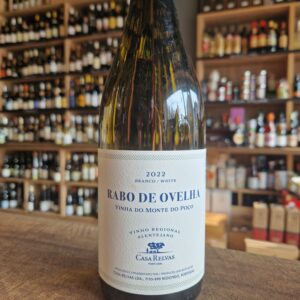 Casa Relvas is a family project, started in 1997 in São Miguel de Machede, in Redondo, by Alexandre Relvas, which aims to continue the history of five generations with a strong passion for the Alentejo and its genuine nature. Over the years, the family has grown along with the business and it didn't take long for it to total about 750 hectares of Montado forest, 225 hectares of olive groves, and 350 hectares of 100% integrated production vineyards. With the three estates - Herdade de São Miguel, Herdade da Pimenta and Herdade de São Miguel de Machede - Casa Relvas has the capacity to produce 6 million bottles of wine annually, 70% of which is to meet the needs of the foreign market, being present in over 30 countries worldwide, offering the best of the Alentejo.
Casa Relvas is a family project, started in 1997 in São Miguel de Machede, in Redondo, by Alexandre Relvas, which aims to continue the history of five generations with a strong passion for the Alentejo and its genuine nature. Over the years, the family has grown along with the business and it didn't take long for it to total about 750 hectares of Montado forest, 225 hectares of olive groves, and 350 hectares of 100% integrated production vineyards. With the three estates - Herdade de São Miguel, Herdade da Pimenta and Herdade de São Miguel de Machede - Casa Relvas has the capacity to produce 6 million bottles of wine annually, 70% of which is to meet the needs of the foreign market, being present in over 30 countries worldwide, offering the best of the Alentejo. -
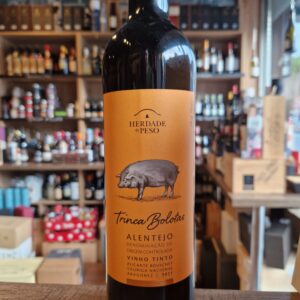 Moving freely through the cork oak forests of the Alentejo, where it feeds on acorns among other things, the Alentejo pig, a species indigenous to Portugal, is Europe's only surviving pastoral pig. Due to the way in which it forms part of the landscape and preserves the region's Mediterranean forest, it is part of Alentejo's heritage. Named after this reputable pig, this wine combines two of Alentejo's biggest symbols. All the grapes used in this wine were produced in accordance with the Sustainable Agriculture Integrated Production guidelines as defined by the International Organisation for Biological and Integrated Control (OILB/IOBC): www.iobc-wprs.org. The rigorous compliance with these practices is certified by an independent organisation, recognized by the Portuguese State. With its smooth tannins and enormous balance, this wine pairs wonderfully with light dishes, such as poultry and pasta, as well as with sausages, ham and more sophisticated meat dishes.
Moving freely through the cork oak forests of the Alentejo, where it feeds on acorns among other things, the Alentejo pig, a species indigenous to Portugal, is Europe's only surviving pastoral pig. Due to the way in which it forms part of the landscape and preserves the region's Mediterranean forest, it is part of Alentejo's heritage. Named after this reputable pig, this wine combines two of Alentejo's biggest symbols. All the grapes used in this wine were produced in accordance with the Sustainable Agriculture Integrated Production guidelines as defined by the International Organisation for Biological and Integrated Control (OILB/IOBC): www.iobc-wprs.org. The rigorous compliance with these practices is certified by an independent organisation, recognized by the Portuguese State. With its smooth tannins and enormous balance, this wine pairs wonderfully with light dishes, such as poultry and pasta, as well as with sausages, ham and more sophisticated meat dishes. -
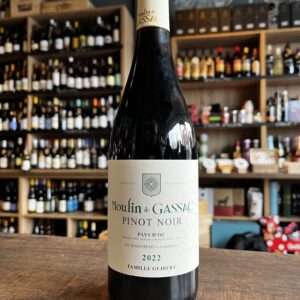 One of the wine films that has had the greatest impact on the industry is undoubtedly Jonathan Nossiter's “Mondovino”. This film was presented at the Cannes Film Festival in 2004, and essentially reflects the conflict between those who understand wine production as a basic artisan work that is completely connected to the land, and those who see it as a corporate business. One of the interviewees featured in the documentary is Aimé Guibert. Creator and champion of the renowned Mas Daumas Gassac, it is thanks to his obsession of giving absolute prominence to the vineyard that he manages to extol the quality of the wines of Languedoc, a region historically known for producing low quality table wines. So when Robert Mondavi, a wine magnate, became interested in this still under used region, Aimé fought with all his might until Mondavi withdrew from his venture. Now, it is his children who continue to protect this legacy with the same passion. A legacy based not so much on the category of the wine as on its quality. Although these wines only carry the vin de pays de l'Oc label, they are considered by great wine specialists to be the “Lafite Rothschilds” of Languedoc-Roussillon.
One of the wine films that has had the greatest impact on the industry is undoubtedly Jonathan Nossiter's “Mondovino”. This film was presented at the Cannes Film Festival in 2004, and essentially reflects the conflict between those who understand wine production as a basic artisan work that is completely connected to the land, and those who see it as a corporate business. One of the interviewees featured in the documentary is Aimé Guibert. Creator and champion of the renowned Mas Daumas Gassac, it is thanks to his obsession of giving absolute prominence to the vineyard that he manages to extol the quality of the wines of Languedoc, a region historically known for producing low quality table wines. So when Robert Mondavi, a wine magnate, became interested in this still under used region, Aimé fought with all his might until Mondavi withdrew from his venture. Now, it is his children who continue to protect this legacy with the same passion. A legacy based not so much on the category of the wine as on its quality. Although these wines only carry the vin de pays de l'Oc label, they are considered by great wine specialists to be the “Lafite Rothschilds” of Languedoc-Roussillon. -
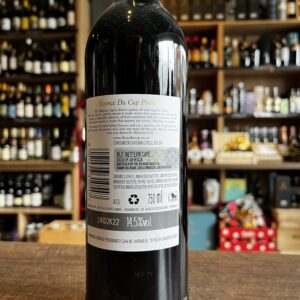
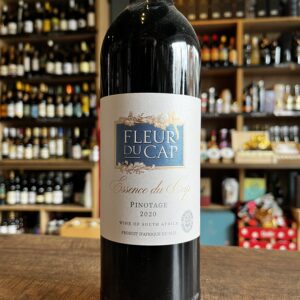 The Fleur du Cap approach is unconstrained. Using only meticulously selected grapes from the finest vineyards across the Cape Winelands, the winery produces a range of wines that offer diversity of choice and diversity of taste. Essence du Cap is known for exceptional quality and wines that express their true varietal character. The grapes were selected from four different vineyard blocks situated around the Bottelary Hills, which were planted in 1987, 1994, 1996 and 1997. Two of the vineyards are bush vines and the remaining trellised. The soils consist of deep decomposed shale (bush vines) and granite (trellised vines), with good water retention. Yields for the bush vines were 6 to 8 t/ha and the trellised vineyards 10 to 12 t/ha. Supplementary irrigation was given during the latter stages of the season to ensure full ripening. Pest and disease control is implemented according to South African subjective IPW standards. This wine is an ideal accompaniment to grilled lamb and poultry, pork roasts and game fish. It is perfect with classic Cape cuisine like Bobotie and Malay Curries, as well as spicy Mexican food.
The Fleur du Cap approach is unconstrained. Using only meticulously selected grapes from the finest vineyards across the Cape Winelands, the winery produces a range of wines that offer diversity of choice and diversity of taste. Essence du Cap is known for exceptional quality and wines that express their true varietal character. The grapes were selected from four different vineyard blocks situated around the Bottelary Hills, which were planted in 1987, 1994, 1996 and 1997. Two of the vineyards are bush vines and the remaining trellised. The soils consist of deep decomposed shale (bush vines) and granite (trellised vines), with good water retention. Yields for the bush vines were 6 to 8 t/ha and the trellised vineyards 10 to 12 t/ha. Supplementary irrigation was given during the latter stages of the season to ensure full ripening. Pest and disease control is implemented according to South African subjective IPW standards. This wine is an ideal accompaniment to grilled lamb and poultry, pork roasts and game fish. It is perfect with classic Cape cuisine like Bobotie and Malay Curries, as well as spicy Mexican food.


